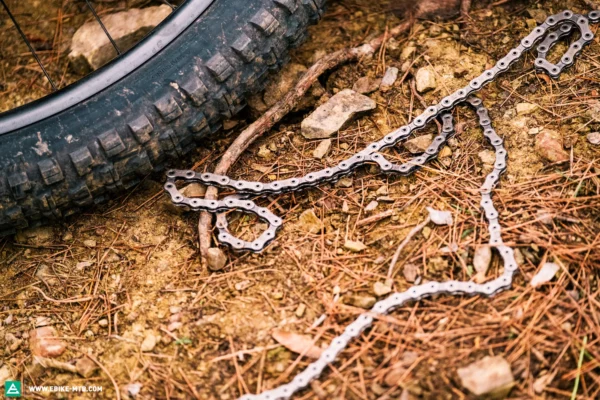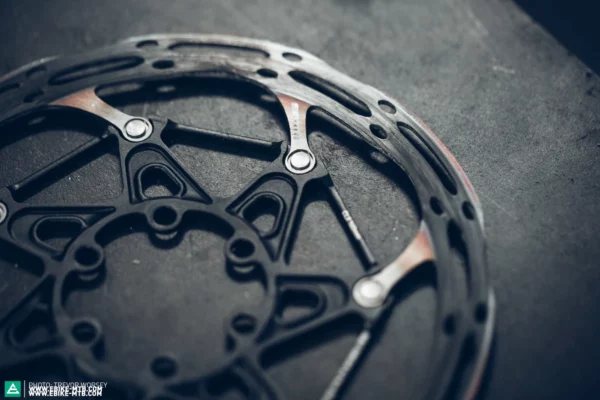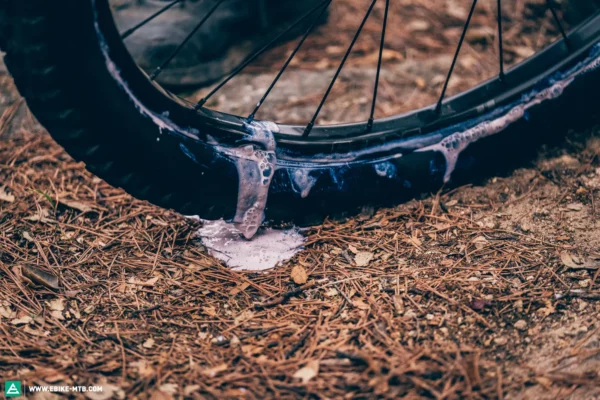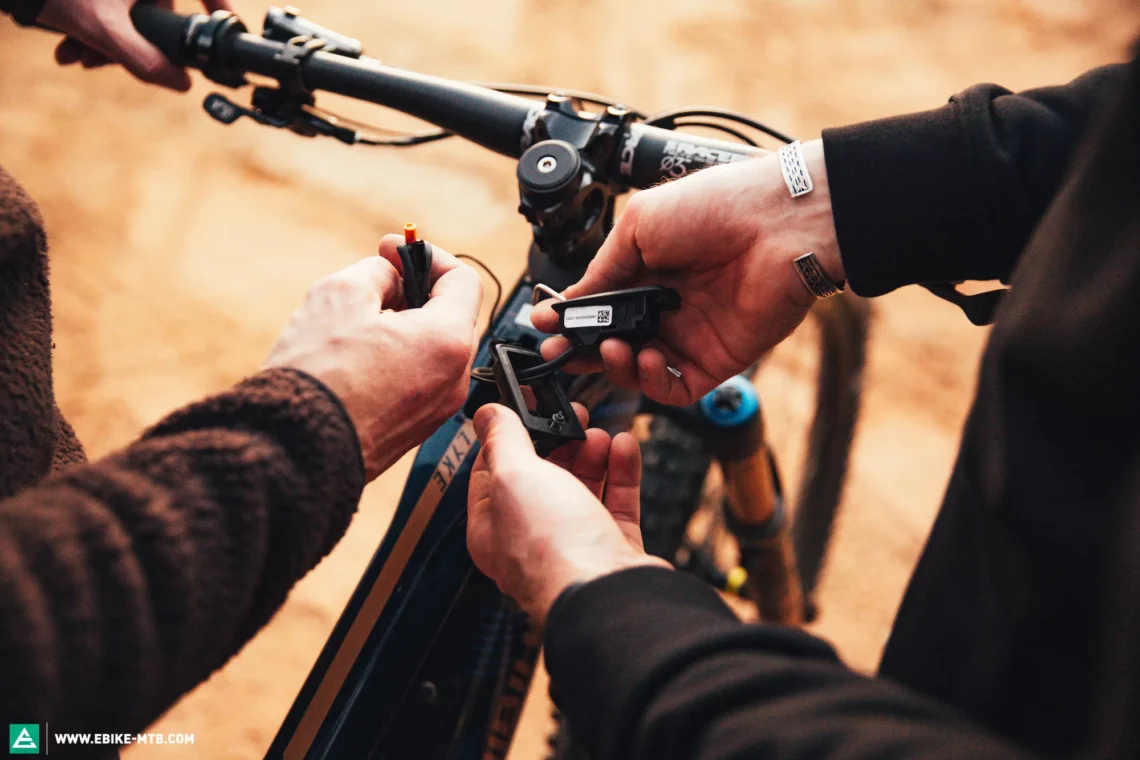More power, speed and distance – e-motors not only make our bikes quicker, but also accelerate their wear. What costs should you expect? Who pays for what? When does the manufacturer’s guarantee come in and when does the warranty apply? And what happens if it comes to a dispute about the liability for defects? We did some research, asked dealers and manufacturers, and found important answers for you.


A typical case from our editorial team: A trail-ready eMTB from a well-known brand was purchased from a local bike shop at the beginning of 2022. Already by the end of the year – with about 3,500 km on the clock – a claim was made to the dealer because of considerable squeaking coming from the rear end. The diagnosis? All the bearings in the rear triangle were worn out! In this case, due to the long and good customer relationship, the dealer exchanged the bearings at their own expense for a small contribution to the thank-you box. But what if the dealer is not so accommodating? Or if you bought your bike online and there is no established relationship with the shop or direct-to-consumer brand? What costs and challenges do you have to expect? We shed light on manufacturer’s guarantee, warranty, and wear and tear.
Wear and tear on your eMTB – What is warranty, what is manufacturer’s guarantee?
Anyone who buys a bicycle today gets a 2-year legal warranty in Germany and in many parts of Europe. In some countries, the period of legal warranty (sometimes also called “statutory warranty” and “legal guarantee”) is even longer. This is where this article should end. But the reality is not that simple. On the one hand, a guarantee is only a voluntary promise by the manufacturer, which is linked to certain conditions also specified by the manufacturer. On the other hand, in most cases the legally regulated warranty applies, an issue surrounded by many myths and untruths. But let’s tackle it all one thing at a time.
The subject of warranty is regulated by law and actually leaves little room for speculation. The reason for this is that warranty is an area where disputes frequently arise. As the regulations differ within the EU, we will talk only about Germany. However, the basics are the same across the EU. When making a claim, your contact person is always the retailer, not the manufacturer. Unless, of course, the manufacturer is also the retailer as with direct-to-consumer brands.

In principle, the warranty is something that the seller is responsible for, and applies for 24 months from the date of purchase or the so-called transfer of perils, or, to simplify this, the time when you pay for the bike and pick it up from the shop. The crux being: The warranty applies to all defects existing at that point in time. Obvious damage such as chipped paint is easy to spot immediately, but what about defects that only become apparent later on during use? In this case, the legislator supports the buyer by shifting the burden proving the cause of defect to the retailer. Since 2022, the legislation assumes that defects occurring in the first year (before 2022: during the first 6 months) from purchase were already present at delivery. After that, the buyer must prove that this was the case, which can often be difficult or impossible. This is where the manufacturer’s guarantee and seller’s goodwill come into play – both completely voluntary services.
Now what does that mean for you when you’ve fallen in love with the hot bike, reluctantly pushed your hard-earned money over the counter and rolled the awesome new bike out of the shop? Simply put: Anything that is defective or faulty on the bike at this time is not your responsibility for the next 24 months. No matter whether it was already identifiable at the time of purchase or not, but if 12 months pass, you might be asked to prove your claim.
To return to the case we mentioned at the beginning: The customer has to report the defect to the dealer. Check. The fault occurred within the first 12 months of a purchase made after 1.1.2022, which means that the dealer has to prove that the defect didn’t exist at the moment of purchase. Check. The dealer is therefore obliged to replace the bearings free of charge. Che… Hold your horses! Because now we come to the central question of this article: What if the dealer objects, using the argument of excessive wear and tear? In other words, they accuse you of improper use of the eMTB, for example by riding too roughly, performing high jumps or simply due to a lack of proper care? This is where things can get difficult, tedious and annoying. On the other hand, we can also understand the seller’s side because in some cases this is certainly true and hits the mark. And in the end, the seller is stuck with the costs or has lost the customer, and can likely end up with a bad review online. So, after all, it’s a problem for everybody involved.
A little side note: Legal warranty also applies to second-hand purchases, but then only for 12 months. Private individuals, however, may explicitly exclude legal warranty. But if they don’t, they are liable for defects in the same way as a retailer. So beware when selling on eBay and similar platforms – as well as when buying, of course!
Wear and tear on eMTBs – Which bike parts deteriorate particularly quickly?
In the case of e-mountain bikes, in addition to the “normal” defects that can occur on a bicycle, there are also those that result from the added technology, the higher weight and the greater power output from the motor. Quite obviously, the drivetrain is often more affected than on an analogue bike. But is it really so?. The drivetrain is one of – if not the most – wear-prone parts on a bike. Surely, we don’t have to tell you how it goes with derailleurs, right? But it doesn’t end there, chain, cassette and chain ring require regular care, maintenance and replacement. In most cases, this wear will progress much faster on MTBs with a motor than on analogue bikes – especially when you’re shifting and the chain crunches, or slips over the cassette sprockets – money shift!. That’s why the drivetrain giants Shimano and SRAM are constantly looking for solutions to make shifting as smooth as possible. Shimano’s LINKGLIDE technology is a good example, making gear changes much smoother but also slower – what works for riders on long rides is often too much of a compromise for ambitious off-road riders. Also, other eMTB-specific parts such as forks, shocks, wheels, tires and brakes are already available. It makes sense to use parts ready for eMTB duty on the rear wheel, as the tire and hub, including the spokes, are subjected to higher stress due to the motor. Whether or not it is just clever marketing regarding the other parts, however, is up to you to decide for yourself. The additional weight of the motor and battery, let’s round it up to 10 kg, compared to an analogue MTB, has a critical effect on some components, but no effect on others. Some factors that should also be mentioned include riding style and the rider’s weight – the weight differences between riders alone can exceed 50 kg…


The main difference to the analogue MTB is, of course, the motor, which usually generates high costs in the case of a defect, with a modern battery costing around € 1,000 and a replacement motor around € 800. Needless to say, defects in these areas often lead to disputes between buyer and seller, mainly because of the high costs involved. This is where manufacturers’ guarantees are particularly important. Riese & Müller, for example, state in their guarantee conditions: “The battery of your E-Bike is a wearing part. The electronic components within are subject to the statutory warranty of two years. We guarantee that the battery will still have a capacity of 60% after two years or 500 charge cycles (depending on which happens first).” Ultimately, every manufacturer handles this differently. Specialized, for example, gives a guarantee for 2 years or up to 300 charging cycles after which the battery has at least still a 75% capacity. In this case, you can even check it for yourself via the Mission Control app, though most times a trip to the dealer is unavoidable.
Wear and tear on the eMTB – User fault or material defect?
That’s all well and good, nevertheless, the question remains: What happens if the chain wears out after less than 1,000 km, a tooth in your cassette gets broken, or the battery dies prematurely? Disputes are bound to happen, and you have to rely on the goodwill of the dealer and the manufacturer. At least in the case of the chain and the cassette, it is beyond question that they are parts that get worn a lot, but how quickly they wear out depends on many factors. The material characteristics, quality, area of application, proper shifting technique, maintenance… This list could go on and on. Beware: An expensive high-tech drivetrain will not necessarily be more durable. Expensive product lines in the bike sector are often designed for performance rather than durability. The exception so far being the new SRAM Eagle Transmission, which is not only one of the most expensive, but also one of the most bombproof groupsets we have ever tested.


It gets easier – and yet at the same time more complicated – when it comes to the components of the motor system. The built-in electronics not only control the motor and battery, they also record data. In the event of a defect, the causes of the failure can be determined on the basis of certain parameters such as temperature, torque, speed, etc. A local dealer allowed us to take a closer look at his options when it comes to the motor and battery system. These turned out to be fairly limited, for example, with a Bosch battery, he can only read out the number of charging cycles and the error log. If the battery is defective, on the other hand, it has to be sent back to the manufacturer, who has far more extensive diagnostic possibilities. Within the warranty period, however, the customer should receive a replacement battery from the dealer. Whether this remains free of charge in the end is up to the manufacturer, though. If user errors are found, the new battery will have to be paid for, of course. The data logging also works for the motor system and creates some kind of legal certainty. If during the first 24 months no user errors are detected, the legal warranty will certainly apply – as this automatically proves the defect existed at the moment of purchase. In the event of a dispute involving purely mechanical components, an expert would have to be called in, which entails corresponding costs but is no guarantee of a satisfactory outcome.
But just as the data recorded by e-components can create legal certainty, they can also expose actions that violate the warranty or guarantee conditions, and can even be illegal. One example being motor tuning. Even if the myth persists in numerous forums that the manufacturers would not be able to prove the tuning after the respective kits are removed – well, it’s best to just assume that they can. Better safe than sorry because in this case, not only the right to a free replacement would be gone. You can also be facing charges such as fraud, riding without a licence, and dangerous interference with road traffic. Especially in the event of an accident with third-party damage, you certainly don’t want to face the consequences!

How do I protect myself from high costs due to wear and tear on the eMTB?
Regardless of the issues of manufacturer’s guarantee and legal warranty, wear and tear on the eMTB causes considerable costs, which are naturally higher than on an analogue bike. The motor causes the drivetrain and tires to wear out more quickly. The generally higher mileage also requires the earlier replacement of the parts that typically get heavy use, such as brake pads and discs. On top of that, maintenance and inspection costs are higher due to the electronic components. But is it possible to protect yourself against these higher expenses? Yes, in several ways.
First of all, you should pay attention to caring for your eMTB. Regular cleaning of the drivetrain and suspension elements as well as oiling and lubricating will significantly extend the life of many parts. Also please avoid the use of high-pressure cleaners. Get a chain gauge to check the wear of the chain and replace it in time before it drags the cassette and chainring into the abyss. Sooner is also better than later when it comes to changing brake pads: You will be safer on the bike, and at the same time the discs won’t get worn so much. Because metal on metal doesn’t just sound nasty…
To be on the safe side, you can also fully insure your eMTB. Nowadays, there are numerous companies that not only cover theft, but also any wear and tear on the bike. The costs for this are mostly very reasonable – even more so in relation to the price of a modern eMTB. As an example: E-MOUNTAINBIKE author Patrick pays less than € 180 per year for his Specialized Levo Comp to cover theft, wear and tear, and fall damage. In many cases insurers even offer useful additional services such as a temporary replacement bike or roadside recovery. Well-known providers in Germany are Ammerländer Versicherung and the online insurance company Hepster. A Google search, however, produces a whole list of other providers – not only in Germany.
A bike subscription or leasing are also options that avoid the follow-up costs that can be difficult to calculate. In both cases, the replacement of wear parts and any repairs are usually included in the monthly fee. The best-known representatives in Germany are eBike Abo and JobRad. But there is now a wide range of competitors – no doubt also in your country.

Between hope and fear?
Wear and tear is completely normal and is a natural part of e-mountain biking. But as soon as the level of wear and tear goes beyond the usual scope or defects and faults begin to occur, trouble, disputes and indeterminable costs can quickly ensue. This means that you often have to rely on the goodwill of the dealer and the manufacturer, as furnishing proof is usually difficult. Special insurances minimise the risk and make the operating costs calculable. And the following principles always go a long way: “Only those who ask can be helped” and “Politeness has certainly never done any harm!”
Did you enjoy this article? If so, we would be stoked if you decide to support us with a monthly contribution. By becoming a supporter of E-MOUNTAINBIKE, you will help secure a sustainable future for high-quality cycling journalism. Click here to learn more.
Words & Photos: Patrick Gruber









